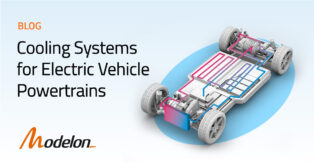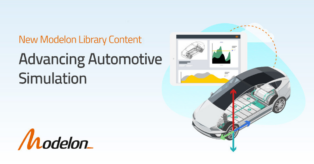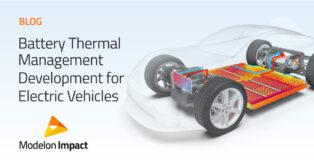When fast isn’t fast enough

How deployment is one of the key success factors
If you would get access to the heart of development at a top Formula 1 team, chances are high that you would find they simulate their vehicle-handling behavior using Modelica models — the same holds true for NASCAR. Dymola and the Vehicle Dynamics Library (VDL) are the de-facto standards for simulating car handling in the premiere motorsports leagues. In this post, I will explain why.
Beyond multi-domain simulation
You might ask: “Isn’t Modelica the open equations-based standard for simulating models containing physics from multiple domains?” Well, yes it is. But it turns out that this technology is good for more than just multi-domain simulation.
It all started with an SAE paper from 2004 called Realtime Simulation of Detailed Vehicle and Powertrain Dynamics. This paper showed how detailed Modelica models, where the vehicle is represented with multi-body mechanics, can be executed in real-time with a fixed-step solver. There are two key technologies that make this possible:
1. Symbolic manipulation: Normally, there is a trade-off between efficient and intuitive representation. Modelica libraries in general, and VDL in particular, are designed so that Dymola can manipulate the equations during the model compile phase. This means that the modeling is component-oriented for user-friendliness and flexibility, while the model execution code automatically is transformed to a much more efficient form.
2. Inline integration: A detailed vehicle model results in systems of stiff equations. A stiff system in combination with a standard explicit real-time solver gives very poor performance since the step sizes have to be reduced in order to ensure stability. Implicit solvers are much more robust, but require additional equations to be solved. Dymola has the capability to insert the algorithm for the integrator directly in the model equations, and then apply its symbolical machinery one again, so-called inlining. This means that Dymola can also simulate stiff systems with reasonable time steps.
Adapting simulation to real life
So, why is it so important to handle real-time simulation? Isn’t it enough to just simulate fast? In many cases, fast will do just fine, but as soon as any hardware is included, the simulation has to adapt to real life. The ultimate hardware in a vehicle system is its driver, and with a real-time capable model you can realize driver simulators. With Dymola and VDL, these simulators are accurate enough to be used professionally in both product development and training.
At Dallara, a recent report shows that the development time of Nippon Super Formula was shortened from 26 to 12 weeks using a simulation-based approach.
A presentation I had at AVEC’14 shed light on how Dymola and VDL support automatic parallelization of the simulation code to allow execution on multiple cores. With this, we now take the next step in allowing additional complexity in real-time vehicle applications.


